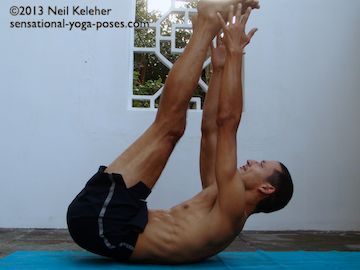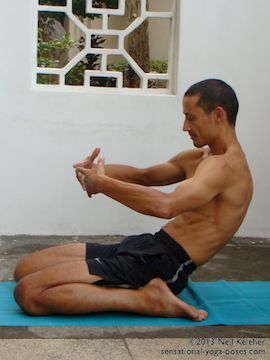Internal Obliques
Using Them To Help Twist Your Ribcage
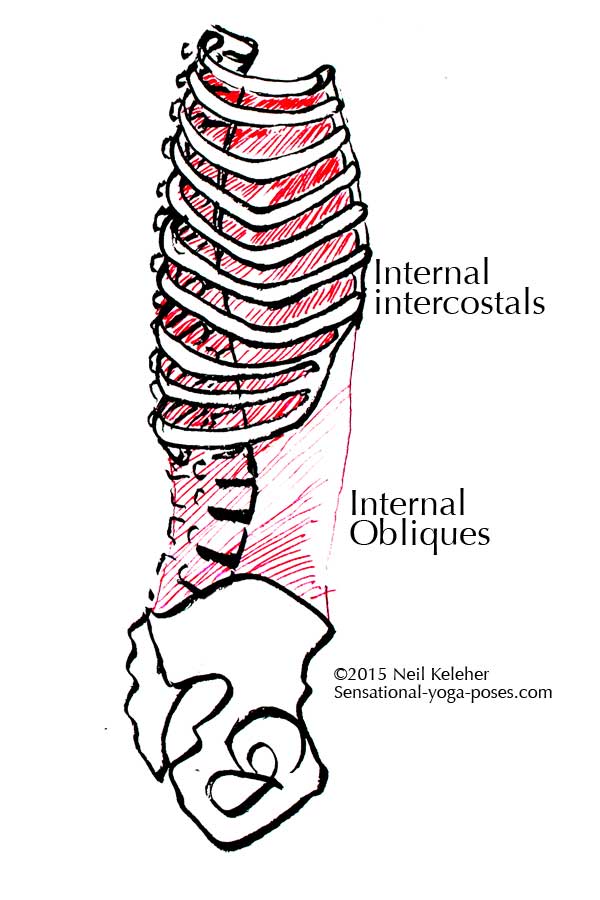
The fibers of the internal obliques angle forwards and upwards from the thoracolumbar fascia, the front two thirds of the hip crest and the outermost half of the inguinal ligament to the bottom of the lowest three ribs and the linea alba, the center line of the abdomen.
Looking downwards at your own abs, these muscles form a roughly pyramidal shape with the apex of the pyramid pointing upwards.
Contracting these muscles on your right side will pull the right side of your ribcage backwards and downwards, or resist it being pulled upwards and leftwards, assuming that the pelvis is fixed.
You can thus use your inner obliques to help turn your ribcage relative to your pelvis or to resist it being turned.
When activated on both sides of the body at the same time, the fibers of the internal obliques can create a downwards and rearwards pull on the bottom ribs helping to pull the front of the ribcage down or resisting it moving upwards. Thus your internal obliques can help to forward bend your ribcage and thoracic spine or to stabilize your ribcage and thoracic spine against back bending.
In a pose like dead dog where you lay on your back with your arms and legs reaching straight up, you can use your internal obliques to lift your pelvis and upper back off of the floor by pulling the sides of your ribcage down into the floor.
Internal Intercostals
The angling of the fibers of the inner obliques carries on to the inner layer of the intercostal muscles. Where the internal obliques span the space between pelvis and ribcage, the internal intercostals span the spaces between each adjacent (next to each other) set of ribs.
Where contracting the right side internal obliques pulls the right side of the ribcage backwards relative to the pelvis (in effect turning the ribcage to the right), contracting the internal intercostals on the right side will, for example, pull rib 8 backwards relative to rib 9. Likewise they pull rib 7 backwards relative to rib 8. (Ribs are numbered from 1 to 12 from top downwards. The higher the number the lower the rib is on the body. )
You can thus use your internal intercostals to twist your ribcage.
This twisting can be more pronounced between ribs 7, 8, 9 and 10 (the middle ribs) since these ribs attach to the cartilege of the costal arch giving them more freedom to move. It is less, but still possible between ribs 1, 2, 3, 4, 5 and 6 (the upper ribs) since these ribs are slightly more rigid, being attached directly to the sternum.
How can you practice this understanding?
You can practice feeling (and activating) your internal obliques one side at a time while twisting and turning your ribcage.
Focus on the right side by pulling your right ribs back relative to your pelvis. Then focus on pulling your ribs, one at a time, and working upwards, backwards relative to the ribs below. Do this slowly and smoothly. Focus on feeling your ribs and on moving them relative to each other and your pelvis.
Rest, and then try again.
Try adjusting the shape of your ribcage. Try it with your ribcage bent forwards to varying degrees and then straight. Find the shape that makes it easiest for your to turn your ribcage and twist it. Rest, and then try it on your left side.
Once you've done both sides, then try activating both sides together.
You can imagine pulling both sides of your ribcage back at once. You may then feel the bottom half of your ribcage pulling back relative to your pelvis.
Focus on the sides of the middle of your ribcage (ribs 10, 9, 8 and 7) and notice how pulling the middle portion of your ribcage backwards can cause your sternum to pull down. It may also causes your back to round and your spine, particularly the lumbar and thoracic regions, to bend forwards.
Implement this understanding while doing yoga poses
Dead dog reach
In a posture like dead dog reach, you can lift your pelvis and your upper ribcage of the floor even more by pressing the sides of the middle part of your ribcage down.
Bent back hero pose
In Bent Back Hero Pose you can roll your pelvis back and then activate your internal obliques by pulling your sternum down and your side ribs back.
Seated twists
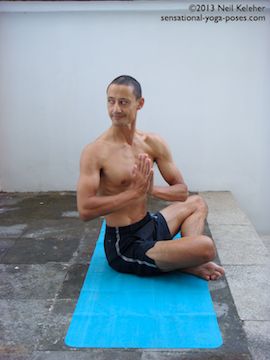
Easy twist
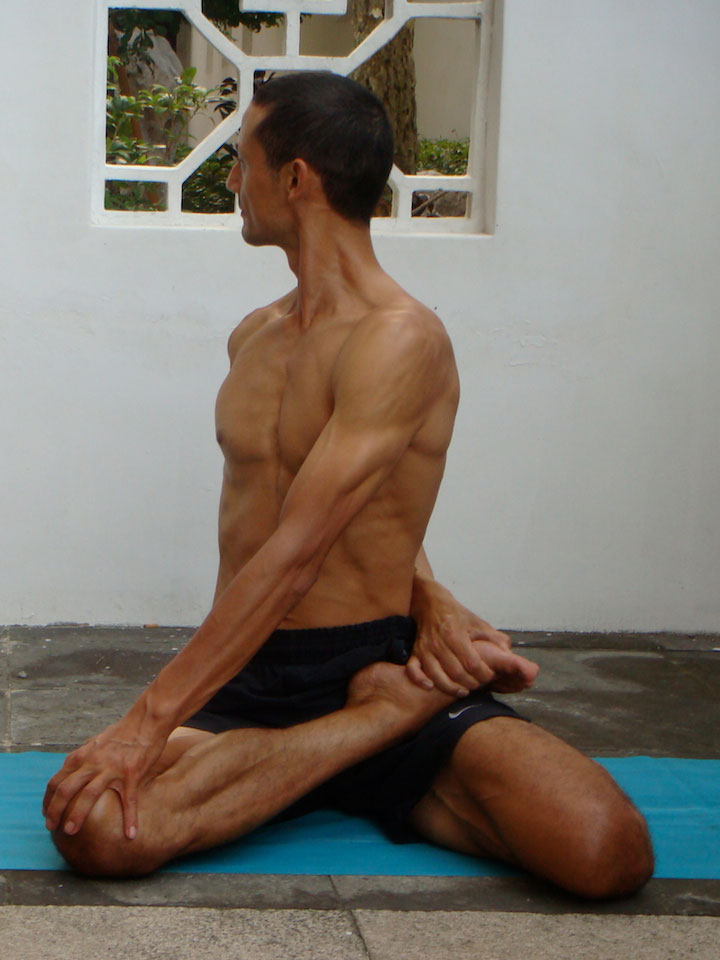
Bharad vajrasana
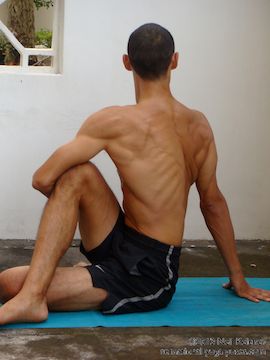
Ardha matsyendrasana
In any twist to the right, whether easy twist, bharadvajrasana, or ardha matsyendrasana to name but a few, you can focus on using the internal layer of the intercostals and obliques to turn and twist the right side of the ribcage to the right.
Use the left side muscles when twisting to the left.
In each case focus on feeling your ribs turning with respect to each other and your pelvis. From there, then focus on feeling the vertebrae of your thoracic spine turning with respect to each other.
You can also use these muscles to help bend your spine forwards, stretching the muscles along the back of your spine.
Published: 2020 08 27

